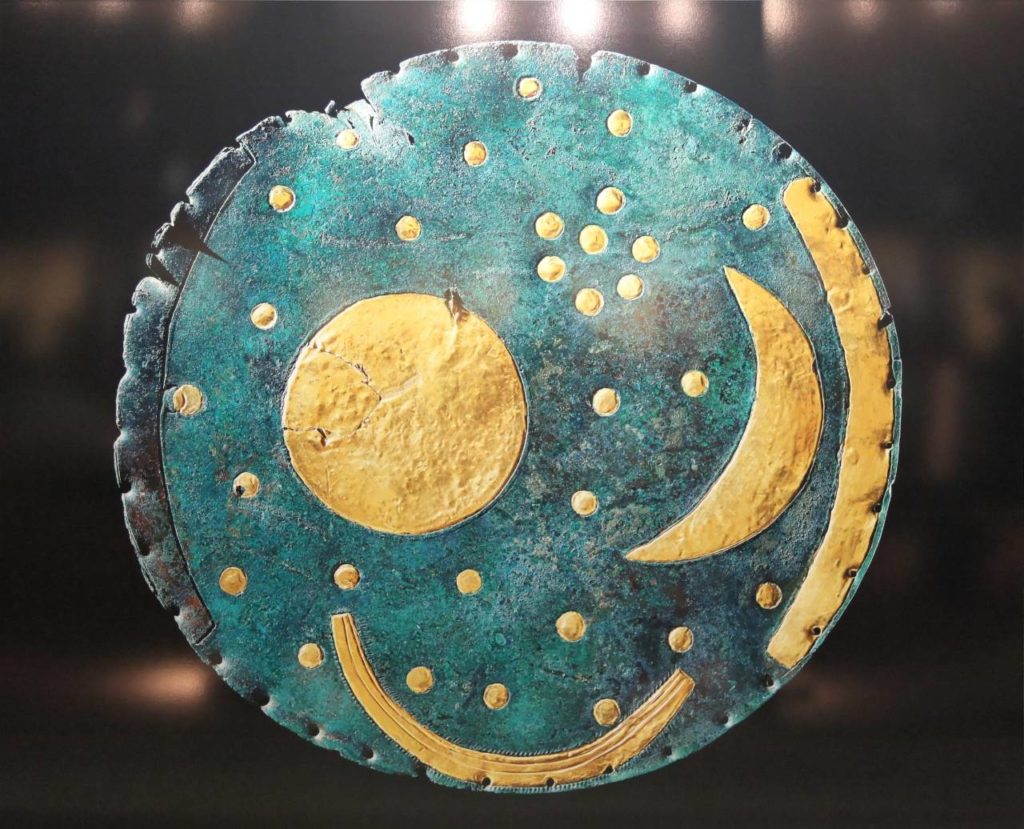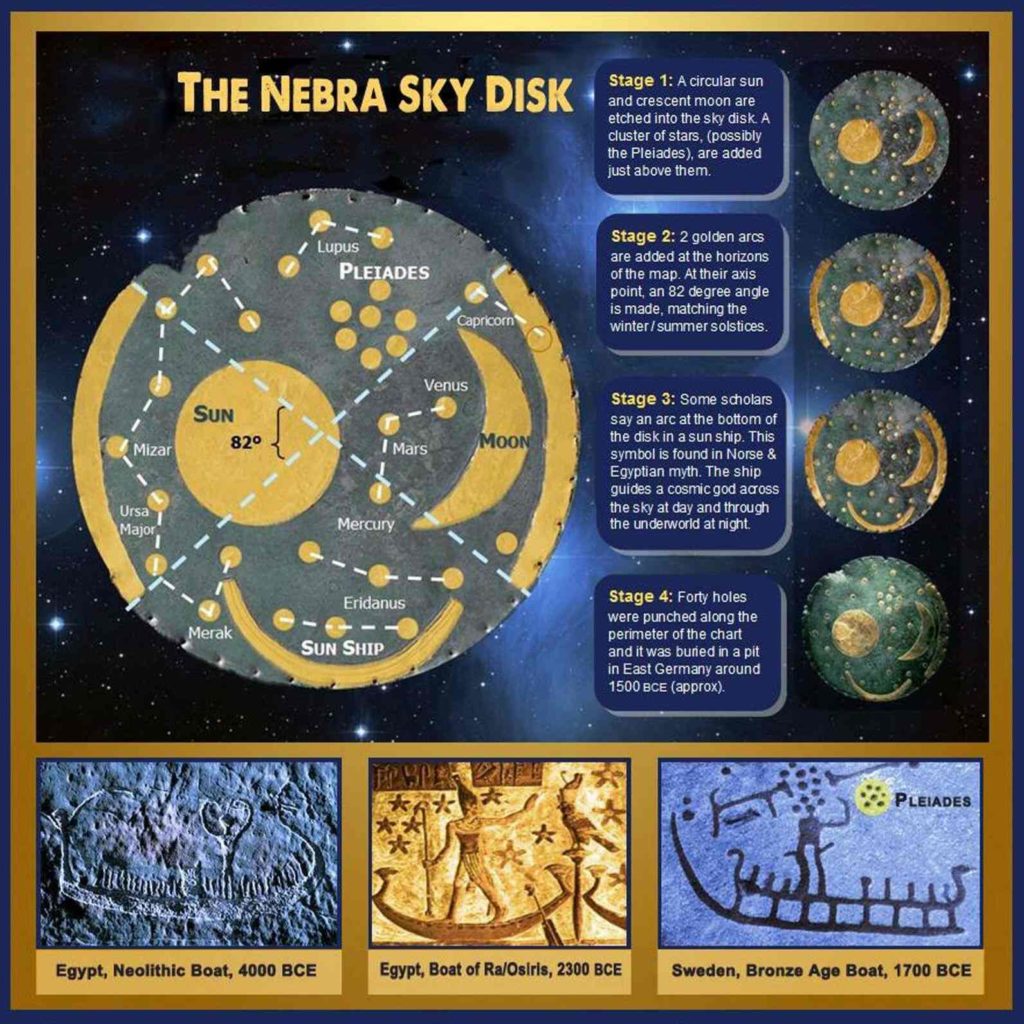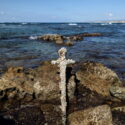Is The Nebra Sky Disk Truly The Oldest Star Map In The World?
A prehistoric star chart known as the ‘Nebra Sky Disk’ was produced in Germany around 1600 BCE. It depicts various critical characteristics of the sky (the sun, the moon, and the stars). The two golden arcs that run down the edges of Disk are one of the most exciting aspects.
Each arc represents the angles between the summer and winter solstices by covering an 82° angle. As a result, Europe’s earliest transportable artifact representing the solar cycles is the sky disc.

Perhaps, the Pleiades constellation is supposed to be represented by a cluster of seven dots at the top of the disc (between the sun and moon symbols). The star mass can be found on Scandinavia petroglyphs, showing a significant sign for the Germanic people.
There are no additional star alignments on the Disk that correspond to any constellations in the night sky. This shows that the object was used as a symbolic representation of the universe rather than a star chart. Is it perhaps possible that the disc depicted some celestial story?
In Babylon, the Pleiades was known as the “star of stars” and was considered a regal part of the night sky. The ancient Egyptians believe it was a manifestation of the goddess Neith, the “divine woman of heaven.” The Pleiades were the Titans’ seven daughters (Atlas and Pleione). Their names meant “sailing ones” because of how the stars floated around the sky.
Another nautical sign appears on the chart, continuing the sailing motif. A third curve at the bottom of the disc, according to some academics, represents the sun boat, a legendary symbol found in Egyptian and Norse mythology.
In Ancient Egypt, Ra was a Sun God who was thought to cruise around the sky in a solar boat. His ship floated across the skies during the day, illuminating the Earth. It disappeared beyond the horizon in the evening, resulting in darkness, only to reappear the next day. This event symbolized the death and the rebirth of the sun god.
In some Scandinavian rock art, a celestial figure with a starry crown standing on a boat can be seen (carved circa 1700 BCE). Unlike the Sun God, who rises and sets every day, this Scandinavian entity was linked to the Pleiades (the constellation to the left of the picture), which meant it rose in the Spring (a season of regeneration) and set again in the Autumn (a time for harvest).

In these fictional portrayals, the solar/cosmic god blazes with vitality in the sky before falling beyond the horizon, suggesting a form of celestial death.
To summarize: the sun symbol on the left of the star map may represent the rising and setting of the sun, as well as the night and day cycle. The moon sign, like the sun, rises and sets across the sky, but for a much longer duration. Most likely, the moon is utilized to represent the month’s cycle.
Over the horizon, the Pleiades also rise and set. It was used by the Greeks to mark the arrival of Spring and the departure of fall (seasonal cycles). The golden arcs on the Disk surface cover an 82-degree angle, matching the summer and winter solstices in Germany (seasonal cycles).
Finally, there’s the cosmic boat, which represents a sky god who oversees the map’s cosmic cycles. The star disc looks to be narrating the story of death and resurrection, which is seen in many world mythology when the symbols are viewed in this light.
It’s a stretch to think of the disc as a portable star map. It’s most than likely a proto-calender made by priests to keep track of their location during the lunar year. They could predict how much longer Spring would last to celebrate the solstices and when to get the farmers to harvest their crops by charting the Pleiades against the disc’s golden arcs (which represented the horizon).
If this is the case, the Nebra Sky Disk would have belonged to someone of high status and would have been a powerful tool for ancients in understanding and navigating the secrets of the cosmos.



